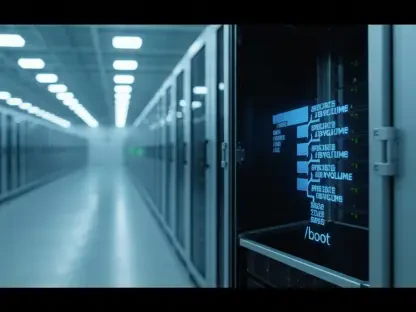The critical security vulnerability, CVE-2025-5024, identified within the GNOME Remote Desktop, poses a significant risk to various operating systems, including Red Hat Enterprise Linux, Debian, and Ubuntu. This flaw allows unauthenticated attackers to exploit system resources, potentially leading to service crashes and system instability. Understandably, this has raised alarms in enterprise environments where GNOME Remote Desktop is integral to remote access workflows. Rated with a CVSS score of 7.4, the vulnerability highlights the urgent need for comprehensive security measures to mitigate the risks associated with this flaw, especially as remote desktop services continue to underpin essential operations.
Understanding the Core Vulnerability
The Nature of the Flaw
At the heart of this vulnerability lies the GNOME Remote Desktop’s handling of incoming Remote Desktop Protocol (RDP) Protocol Data Units (PDUs). The system’s reaction to malformed PDUs can trigger vast and uncontrolled resource consumption. This, in turn, leads to the crashing of services and the potential destabilization of the entire system. By enabling remote execution with minimal complexity and no special privileges, the flaw presents itself as dangerously exploitable, albeit requiring some degree of user interaction to effectuate. The ease with which unauthenticated attackers can execute such attacks underscores the seriousness of the flaw.
The impacts of a compromised GNOME Remote Desktop are manifold, particularly through denial-of-service scenarios that result in persistent resource leaks. Such leaks may often necessitate manual intervention for resolution, as simple system restarts might not suffice to restore operations to their normal state. The persistent nature of these attacks means they can have prolonged effects on system reliability, increasing the potential for downtime and impacting business operations. In enterprise environments where remote desktop services are vital, this could mean heightened disruptions and the need for more robust incident response plans to manage potential breaches.
Potentially Affected Systems and Exploitation Risks
The potential for exploitation of this vulnerability is exacerbated by its compatibility with several widely used systems, including Red Hat Enterprise Linux, Debian, and Ubuntu. In these environments, remote desktop functionalities are often key to maintaining robust IT operations, highlighting why this flaw is so concerning. The problem stems from how GNOME Remote Desktop manages RDP PDUs. Malformed units can quickly deplete resources, leading the service to crash, which leaves systems unreliable. The simplicity of exploitation—requiring no special privileges and minimal complexity—means any unauthenticated attacker can pose a significant threat.
Those relying heavily on remote desktop services for operational continuity face increasing vulnerability to such threats. The consequences of a successful attack vary from temporary service disruptions to extended system instability, often demanding meticulous scrutiny of internal processes and emergency responses. Organizations must adopt a defensive stance, recognizing the flaw’s easy execution route, and focus on preventative measures alongside swift incident alerts to avoid exploitation. As enterprises implement these protocols, they brace for potential threats, underscoring the vulnerability’s broad impact on remote desktop service security frameworks.
Mitigating the Threat
Strategic Responses by Security Experts
In response to these security concerns, experts advise several immediate actions. Temporarily disabling the gnome-remote-desktop service and blocking the remote desktop’s standard port 3389 at the firewall level is recommended, especially for systems exposed to the internet. Such preventative measures are critical in reducing the attack surface until more permanent solutions, like vendor patches, are available. Additionally, enhancing network segmentation and rigorously implementing access control policies can significantly thwart unauthorized RDP access, providing a fortified line of defense within an enterprise’s network security strategy.
Monitoring for anomalous resource usage patterns is equally essential, as these could be indicative of ongoing exploitation attempts. By establishing consistent monitoring and real-time alert systems, organizations can maintain vigilance and swiftly counter potential threats. This proactive defense posture not only aids in quickly identifying vulnerabilities but also facilitates immediate responses that can contain and minimize potential damage. Overall, these measures underscore the importance of a robust and comprehensive approach to threat mitigation, even before patches are rolled out by software vendors to address these vulnerabilities conclusively.
A Broader Look at Remote Desktop Security Trends
This vulnerability underlines a larger trend of growing threats to remote desktop services, urging constant vigilance in security practices. The necessity for immediate mitigation actions reflects the substantial risks posed to systems relying heavily on remote connectivity. Enterprises must keep abreast of security updates and adapt their protocols swiftly as new challenges emerge. As this landscape evolves, organizations should remain committed to safeguarding systems through updated security measures and prompt incident response strategies. This foresight is crucial for maintaining integrity, availability, and security in remote desktop environments.
Organizations are urged to anticipate forthcoming security patches and prepare accordingly. In environments where GNOME Remote Desktop may be vulnerable, alternate solutions might offer interim continuity. The transition to these alternatives could serve as a temporary measure but underscores a commitment to resilience while awaiting more lasting software updates. The situation further amplifies the need for companies to evaluate existing remote desktop infrastructures, ensuring they are equipped to handle similar vulnerabilities in the future while fostering an agile approach to ongoing cybersecurity threats. Overall, these actions signal a pivotal reassessment of remote desktop strategies as enterprises work to fortify defenses against such vulnerabilities.
Forward Path for Protecting Remote Desktop Systems
Beyond Immediate Risks: Preparing for Future Challenges
In acknowledging and addressing these vulnerabilities, Red Hat has already highlighted the issue through a bugzilla report. This acknowledgment stresses significant focus on how uncontrolled resource consumption—often triggered by malformed RDP PDUs—should be dealt with. As organizations brace for forthcoming updates, it becomes imperative to explore alternative remote desktop solutions that ensure continuity without compromising security. By fostering an agile approach, they prepare their IT frameworks not only against current vulnerabilities but also against potential future threats that target remote desktop services.
Looking beyond immediate patching, enterprises should cultivate a culture of continuous security assessment and internal audits of their remote access frameworks. The ability to identify weaknesses proactively and implement robust remedial measures will likely shield against emerging threats, setting a proactive precedent in cybersecurity practices. As updates are rolled out, these preparations can act as a buffer, ensuring smooth transitions and continuity of service. The ability to stay ahead of evolving security challenges, paired with an adaptable IT strategy, will be a defining factor in mitigating similar vulnerabilities in the future and maintaining system integrity.
Long-Term Security: A Proactive Stance
A serious security vulnerability, known as CVE-2025-5024, has been detected in the GNOME Remote Desktop, posing significant threats to various operating systems such as Red Hat Enterprise Linux, Debian, and Ubuntu. This flaw enables attackers without authentication to exploit system resources, potentially resulting in service crashes and causing system instability. In corporate environments where the GNOME Remote Desktop is vital for remote access operations, this discovery has understandably caused concern. The vulnerability is rated with a Common Vulnerability Scoring System (CVSS) score of 7.4, stressing the need for immediate and comprehensive security strategies to reduce the risks associated with this flaw. As remote desktop services continue to be crucial for essential operations, these security measures become even more critical. Technology teams must prioritize updates and patches to ensure the stability and security of their systems, safeguarding against potential attacks that exploit this vulnerability.









